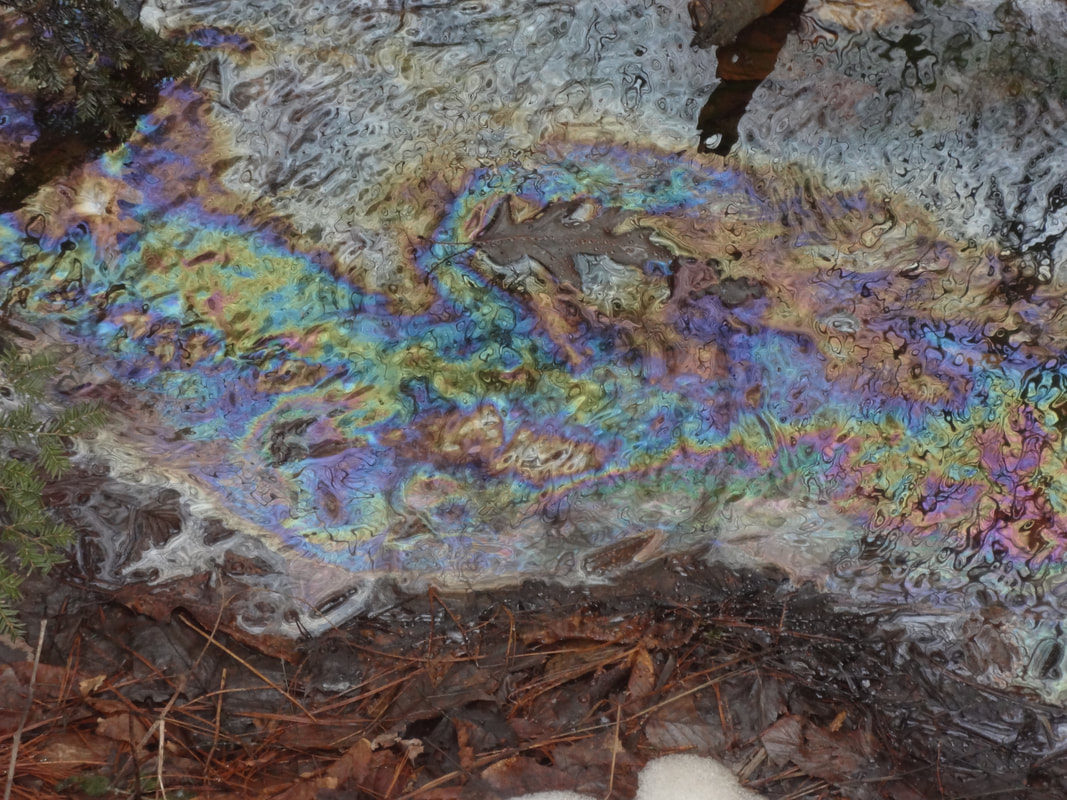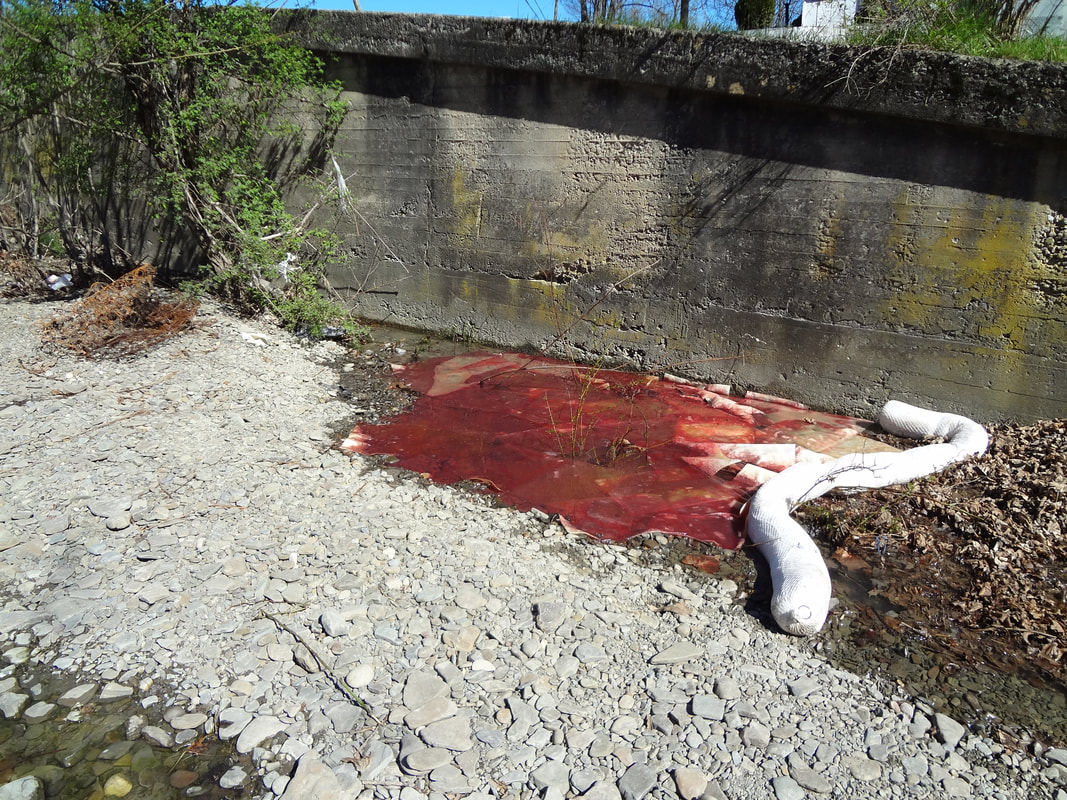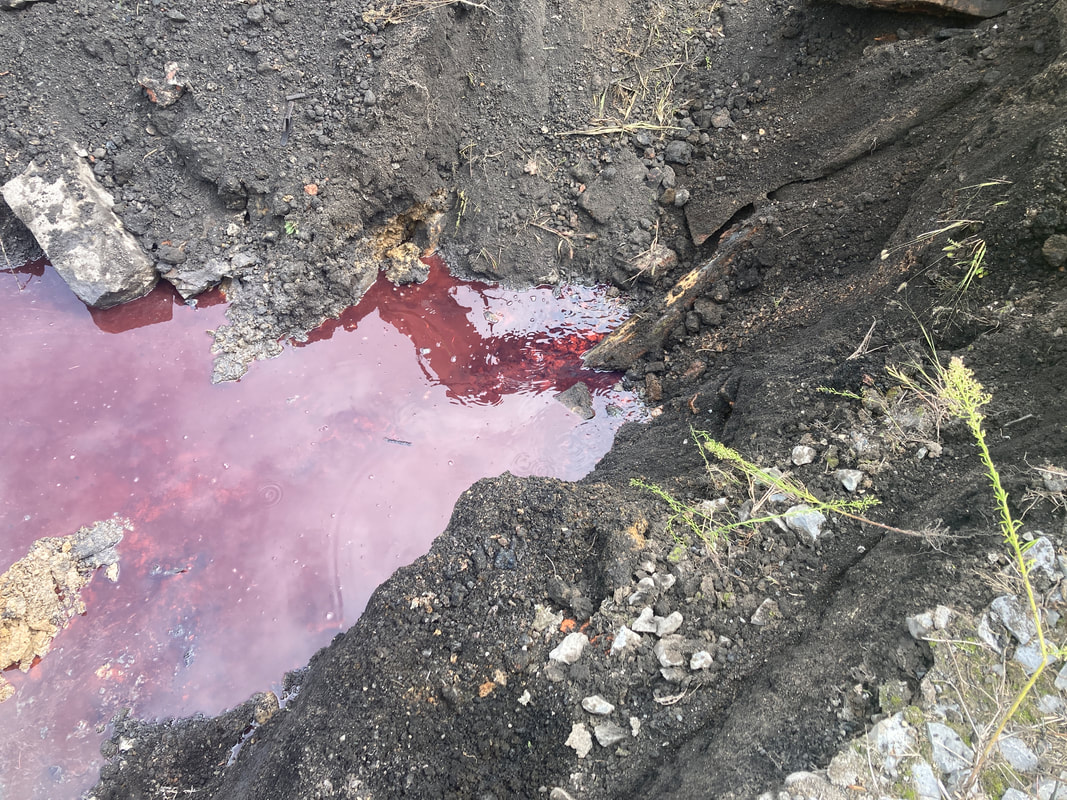|
While hiking along one of the region’s waterways, you notice what appears to be a rainbow-hued oil spill floating across the surface of the water. What should be the next step? “When you see a sheen like that, there is usually one of two causes,” said Randy Farmerie, program manager for environmental cleanup with the Department of Environmental Protection (DEP). “One is that it may be petroleum, but there is also an iron-reducing bacteria that we see quite a bit that causes the same looking sheen. If it is this sort of naturally occurring phenomenon, there’s really nothing we can do.”
Megan Lehman, community relations manager for the DEP’s Northcentral regional office, added the DEP respects that there is a hierarchy of emergency response.
“When there is a truck accident, and there is an injury or entrapment or, God forbid, a fatality, we don’t have the priority there. Sometimes it can be hours after a spill before we can really access the site, and a lot of times, things have already washed downstream by then,” she said. “It can be hard to tell what was released, where and how much because you are dealing with kind of a stale scene – however, it is a necessary process for emergency personally to have the priority first.” Vehicle accidents make up a large majority of petroleum spills addressed by the DEP’s response team. “In terms of those accidents, they can range anywhere from a fuel tank in a personal car to a tanker truck spill and everything in between,” said Farmerie. “All together, vehicle accidents make up the biggest single source of petroleum spills that we see.” Home heating oil spills can also be common, Mears added. “As the weather changes from fall going into winter, the ground starts to freeze and heave, or we go into spring and the ground is getting soft. Oil tanks can tip over, and homeowners don’t always do due diligence to make sure tanks are placed correctly. The bottom of tanks can also get wet and rust out over time.” There are many variables that impact how each spill is investigated, Farmerie admitted. “When a call comes in, we will evaluate it and dispatch to get a better look. We get calls where someone spilled two ounces of petroleum – that one we likely won’t spent a great deal of time investigating, to be honest,” he said. “If it is a significant spill, we will have somebody go out and look at it and determine what can be done.” Whenever a spill involves a waterway, one of the variables assessed, according to Mears, is if there are any surface intakes for drinking water nearby. “If it is some sort of wellfield or a place where communities draw water, we take special measures and notify downstream users if that’s the case so they can take appropriate action,” he said. “That’s a pretty big item on our list of things to do when we find a spill in water.” Sometimes, investigators are not able to identify the source of the spill, but if the source is located, the responsible party is asked to conduct the cleanup. “The cleanup can vary anywhere between putting in boons and pads to try to control a sheen, to a much bigger project that involves soil excavation or something like that,” said Farmerie. “It doesn’t have to reach a stream for us to do something about it – if it is soil contamination, it still has the potential to pollute waters, and that needs to be cleaned up where it happens.” Oil-absorbent boons, or pads, never fully collect all of the petroleum that is spilled, Farmerie added. “They will collect a significant amount of it, but there is not a technology out there that is going to get it all. Ultimately, we do all we can, however, to prevent it from getting into a waterway,” he said. “Sometimes, an underflow dam is used where you can stop the petroleum from moving while allowing some water past it. Then you use a vac truck – which is like a giant vacuum cleaner – to suck up all the petroleum and other liquids behind the dam.” Initial aquatic impacts can actually be pretty minimal – at least to fish and other creatures that stay below the petroleum floating on the surface – as long as the spills are properly addressed and cleaned up, Mears suggested. “Petroleum can be pretty impactful visually, but there are many other things you cannot see such as pesticides or something else where just a little can get into a waterway and you have a really bad outcome,” he said. “For instance, even something like milk, depending on the time of year and the temperature, can have a really bad impact on a stream.” “We’ve had incidents where petroleum is floating on the top of the water and fish are swimming below it without any discernible impact because the petroleum is floating above them,” added Farmerie. “As long as you get it off pretty quickly, it doesn’t seem to have an immediate impact.” However, petroleum spills that aren’t properly addressed can cause a deadly ripple effect on all levels of aquatic life, according to reports from the Environmental Protection Agency. “All types of freshwater organisms are susceptible to the deadly effects of spilled oil, including mammals, aquatic birds, fish, insects, microorganisms, and vegetation. In addition, the effects of spilled oil on freshwater microorganisms, invertebrates, and algae tend to move up the food chain and affect other species,” the EPA shares on a release available at its website’s archives. “Standing water such as marshes or swamps with little water movement are likely to incur more severe impacts than flowing water because spilled oil tends to ‘pool’ in the water and can remain there for long periods of time.” Among the potential negative impacts of petroleum spills on standing freshwater bodies, according to the EPA:
Potential negative impacts on flowing freshwater, again according to the EPA, include:
To report a potential petroleum spill situation, contact your county emergency response team. You can find more information about petroleum spills and steps you can take to avoid potential issues by visiting www.dep.pa.gov and search for “petroleum spills.”
0 Comments
Leave a Reply. |
AuthorsRiverkeeper John Zaktansky is an award-winning journalist and avid promoter of the outdoors who loves camping, kayaking, fishing and hunting with the family. Archives
July 2024
Topics |
||||||||





 RSS Feed
RSS Feed